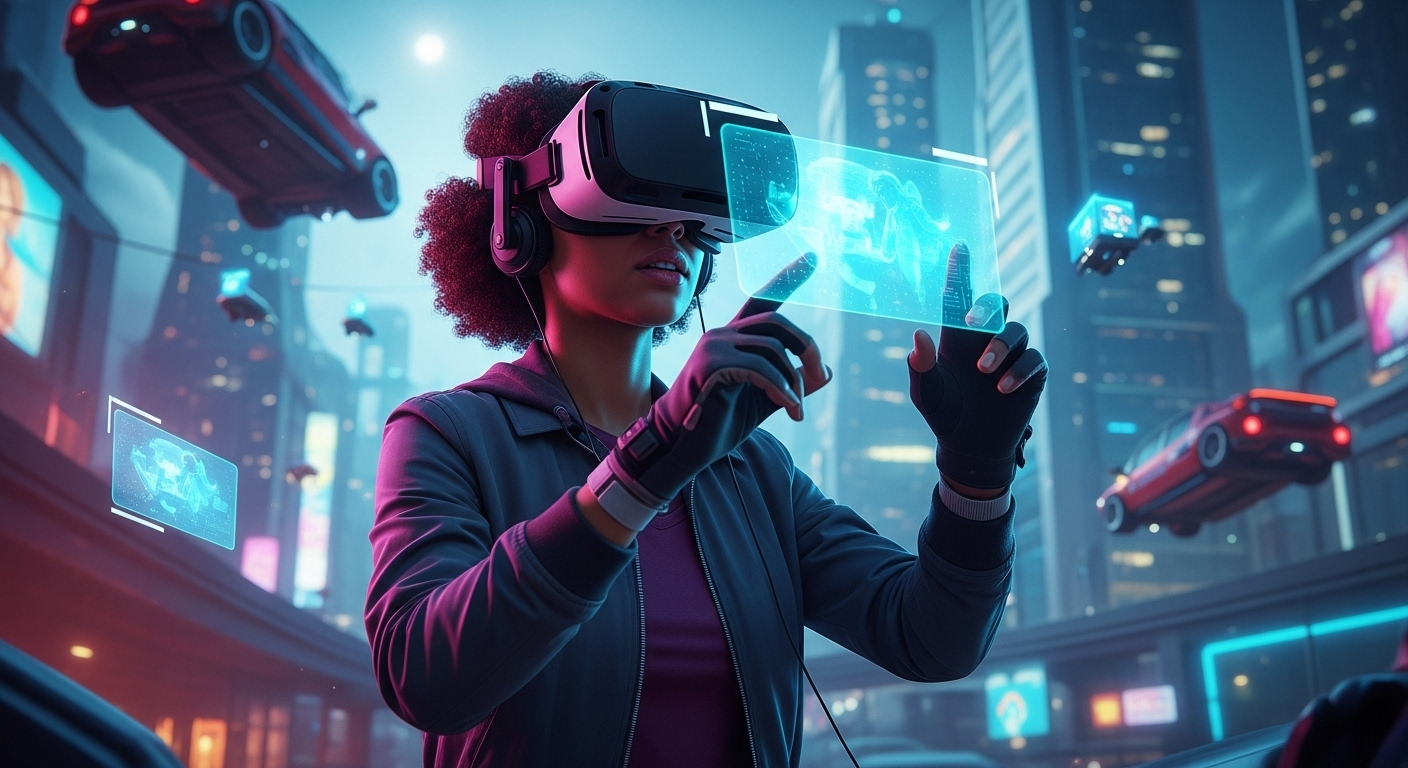Neon Nostalgia: The Retro-Futuristic Aesthetic's Comeback
In a world increasingly dominated by sleek minimalism and digital interfaces, a vibrant countermovement is gaining momentum. The retro-futuristic aesthetic, with its neon-soaked cityscapes and chrome-plated visions of tomorrow, is experiencing a remarkable resurgence across various artistic mediums. This cultural phenomenon, rooted in mid-20th century predictions of the future, is now captivating a new generation of creators and consumers alike. From music videos to fashion runways, the allure of this nostalgic yet forward-looking style is reshaping contemporary visual culture and challenging our perceptions of progress.

Science fiction literature and films of the time played a crucial role in shaping this aesthetic. Works like Fritz Lang’s Metropolis and the illustrations of Frank R. Paul set the stage for a future that was simultaneously awe-inspiring and familiar. The iconic flying cars, robot assistants, and gleaming skyscrapers became staples of this imagined tomorrow.
As the decades progressed, this optimistic vision of the future began to evolve. The 1980s saw a darker, more cynical take on retro-futurism, exemplified by the cyberpunk genre. Films like Blade Runner and novels such as Neuromancer painted a gritty, neon-lit world where advanced technology coexisted with urban decay.
The Modern Revival
Today’s resurgence of the retro-futuristic aesthetic is not merely a reproduction of past visions but a reimagining that speaks to contemporary anxieties and aspirations. This neo-retro-futurism blends nostalgia for an optimistic past with a critical examination of our present relationship with technology and progress.
In the realm of visual arts, artists like Syd Mead and Simon Stålenhag have gained recognition for their stunning depictions of retro-futuristic landscapes. Their work often juxtaposes familiar elements of mid-20th century Americana with fantastical technology, creating a sense of alternate history that resonates with viewers.
Music and the Synthwave Revolution
One of the most prominent manifestations of the retro-futuristic revival can be found in music, particularly within the synthwave genre. Artists like Kavinsky, The Midnight, and Perturbator have crafted a sound that harkens back to the synthesizer-heavy scores of 1980s science fiction films while infusing them with modern production techniques.
This musical movement has expanded beyond audio, influencing album artwork, music videos, and live performances. The visual aesthetic associated with synthwave often features neon grids, sunset-hued skies, and retrofuturistic automobiles, creating a cohesive audio-visual experience that transports listeners to an idealized version of the past’s future.
Fashion’s Embrace of Retro-Futurism
The fashion industry has also been quick to adopt elements of retro-futurism. Designers are increasingly incorporating metallic fabrics, holographic effects, and bold geometric patterns into their collections. Brands like Balenciaga and Gucci have presented runway shows that seem to draw inspiration from both 1960s space-age couture and 1980s cyberpunk aesthetics.
This trend extends beyond high fashion, influencing streetwear and everyday style. Holographic accessories, neon-accented sneakers, and vintage-inspired tech gadgets have become coveted items among fashion-forward consumers looking to add a touch of retro-futuristic flair to their wardrobes.
Digital Art and the NFT Boom
The rise of digital art and non-fungible tokens (NFTs) has provided a new platform for retro-futuristic expression. Artists working in this medium often blend pixelated graphics reminiscent of early computer games with sleek, futuristic elements. The result is a unique visual style that feels both nostalgic and cutting-edge.
Notable digital artists like Beeple and FEWOCiOUS have incorporated retro-futuristic themes into their work, often commenting on the intersection of technology, nostalgia, and contemporary culture. The success of these artists in the NFT market has further solidified the aesthetic’s relevance in the digital age.
Architectural Influences and Urban Design
The retro-futuristic aesthetic is not confined to two-dimensional art forms; it’s also making its mark on architecture and urban design. Cities like Tokyo and Dubai have embraced futuristic architectural styles that seem to have stepped out of science fiction. Buildings with sweeping curves, LED-lit facades, and impossible geometries are becoming increasingly common in urban skylines around the world.
Moreover, there’s a growing trend in adaptive reuse projects that reimagine mid-century modern buildings through a retro-futuristic lens. These renovations often preserve the original structures’ clean lines and optimistic spirit while incorporating contemporary sustainable technologies and digital interfaces.
The Psychology Behind the Trend
The current popularity of retro-futurism raises intriguing questions about our collective psyche. In an era of rapid technological change and global uncertainty, why are we drawn to these past visions of the future?
Psychologists suggest that this aesthetic offers a form of escapism, allowing individuals to momentarily inhabit a world where the future still held unlimited promise. It provides a comforting alternative to the often dystopian visions that dominate contemporary science fiction and news cycles.
Additionally, the retro-futuristic style may serve as a critique of our present reality. By highlighting the disparity between past expectations and current realities, it encourages reflection on the nature of progress and the direction of technological development.
A Future Informed by the Past
As we continue to navigate an increasingly complex and technologically driven world, the retro-futuristic aesthetic offers a unique lens through which to examine our relationship with the future. Its resurgence across various creative disciplines speaks to a collective desire to recapture the optimism and wonder that once characterized our visions of tomorrow.
While it’s easy to dismiss retro-futurism as mere nostalgia, its ongoing evolution and adaptation suggest a more profound cultural significance. By blending elements of the past with contemporary concerns and technologies, this aesthetic movement is helping to shape new narratives about our potential futures.
As artists, designers, and creators continue to draw inspiration from these retro visions, we may find ourselves better equipped to imagine and build a future that balances technological advancement with human values and artistic expression. In this way, the retro-futuristic revival is not just a trend, but a valuable tool for reimagining our collective future.




